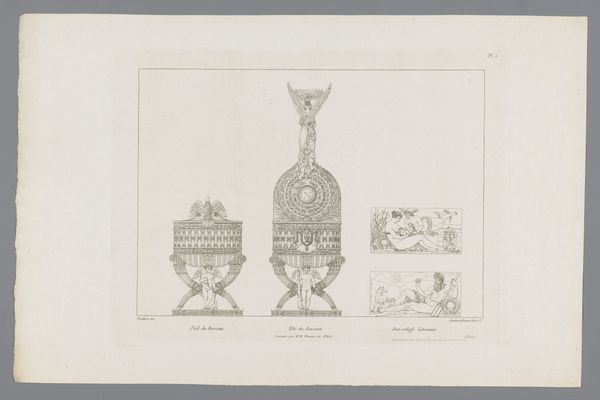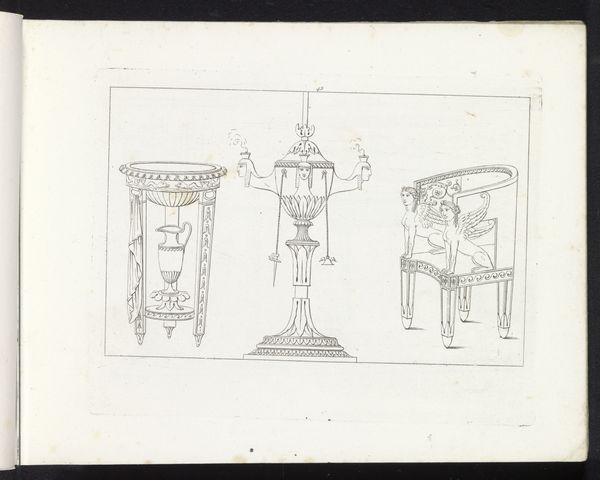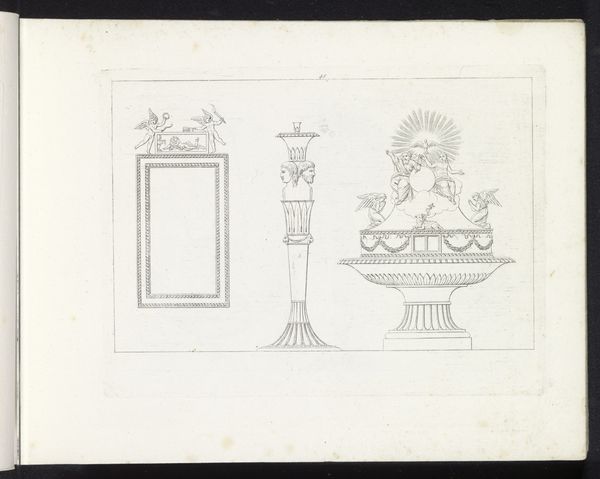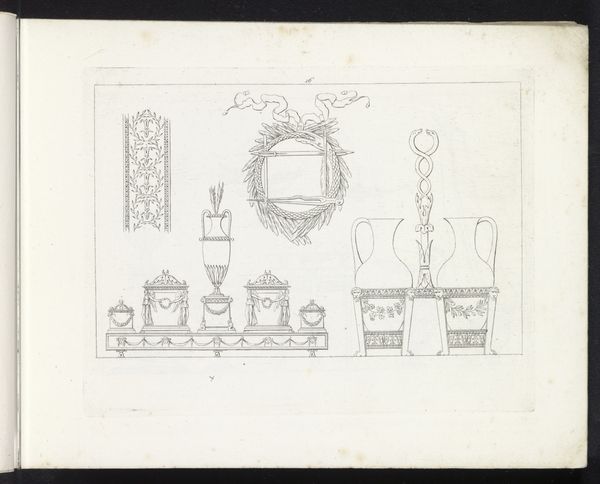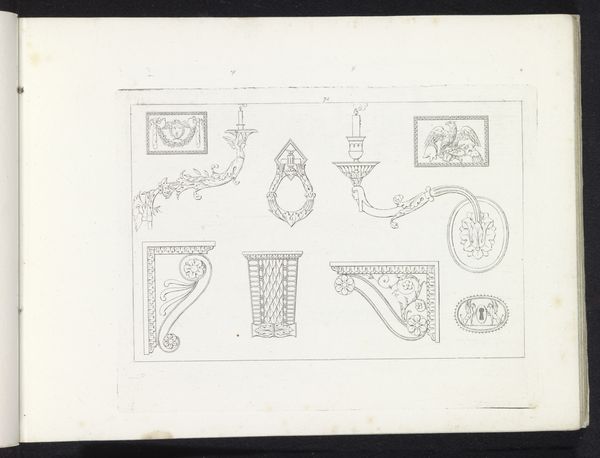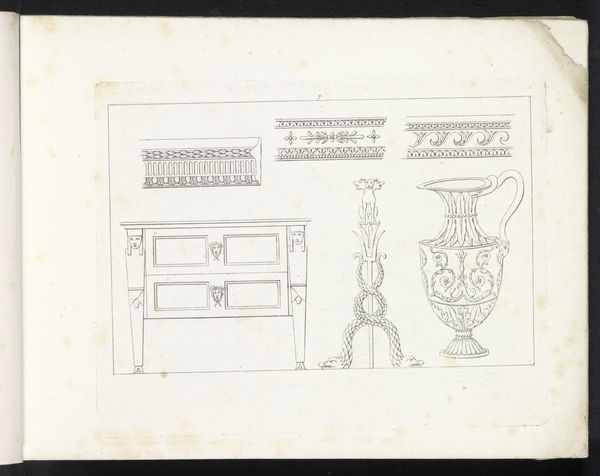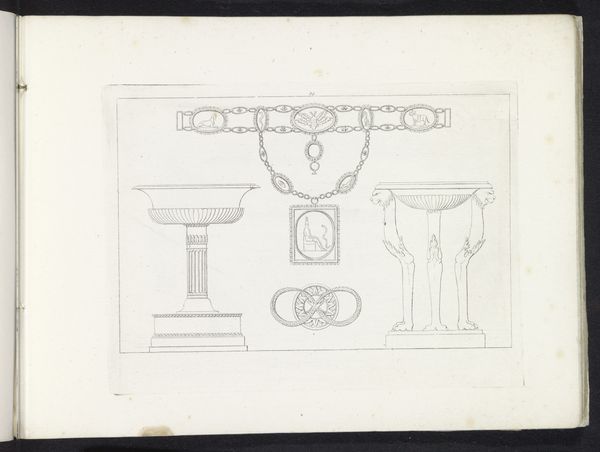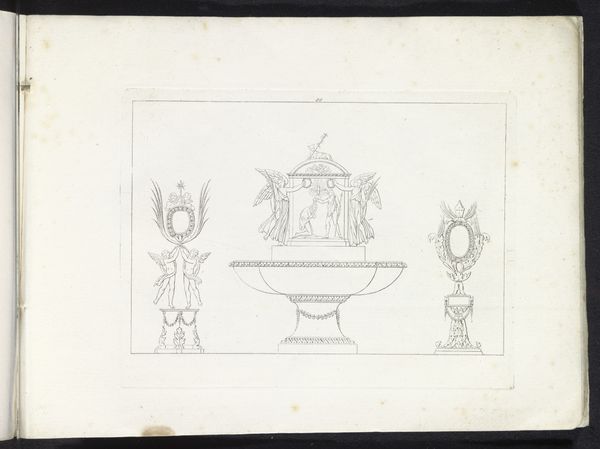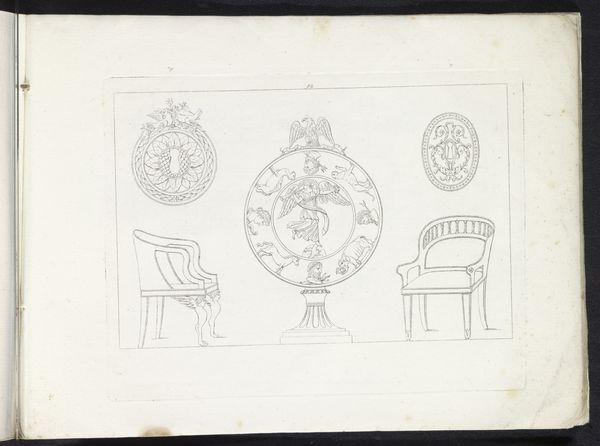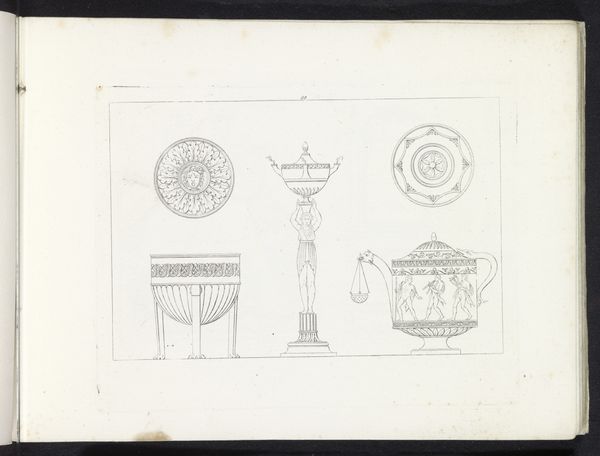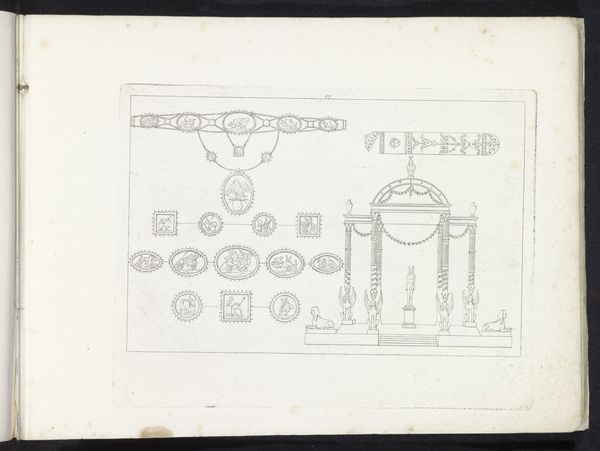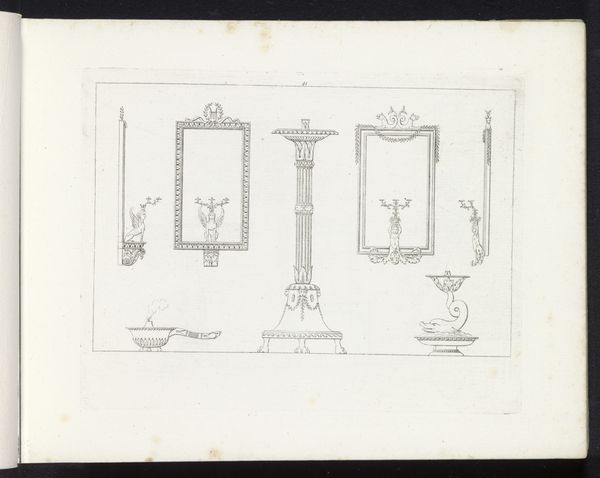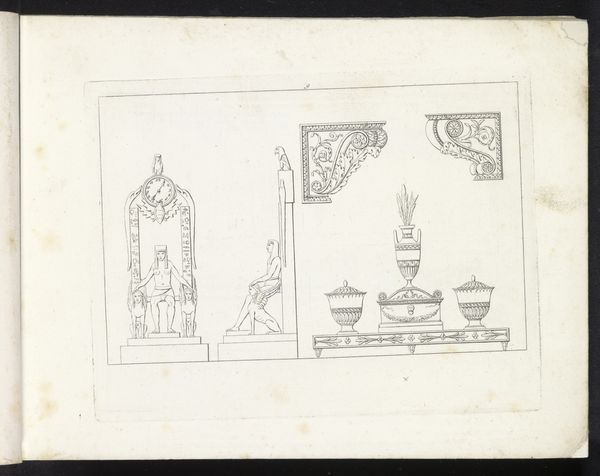
drawing, ink
#
drawing
#
neoclacissism
#
ink
#
geometric
Dimensions: height 165 mm, width 216 mm
Copyright: Rijks Museum: Open Domain
Curator: This is a drawing titled "Medaillon, camee, twee kannen en een standaard," made in 1817 by Pietro Ruga. It's rendered in ink, primarily, and showcases Neoclassical aesthetics. Editor: My first impression is one of remarkable austerity and an almost clinical precision. The linework is so controlled, so deliberate. The composition feels incredibly balanced, symmetrical even. Curator: Precisely. The success here stems from Ruga's command of line, the very skeletal structure of representation. Notice how the positive and negative spaces play off one another. It generates an interesting dialogue. Editor: Speaking of dialogues, I’m particularly drawn to the medallion cameo at the top. The laurel wreath, the crossed weapons… they speak to ideas of civic virtue, perhaps even martial prowess. I also like the motif of the human face or mask throughout. They carry strong archetypal meanings related to drama or roles people play in life. Curator: Good point, though my eye keeps returning to the careful gradation of the shading around the curves of the urns. It suggests an awareness of form that transcends mere ornamentation. And there's the almost geometric perfection with which each object is rendered. Observe how the details of each are methodically accounted for, producing this ordered effect overall. Editor: But couldn't this be more than just an exercise in pure form? The imagery —the vessels, the standard, the allusions to classical motifs— evoke a sense of ritual, perhaps even sacrifice or feasting. There is an element of power being symbolized here, certainly. Curator: Maybe so, but I believe what stands out is Ruga's conscious effort to reduce the subject matter to its most essential visual components, using line and shadow to generate shape and volume. These attributes allow it to speak, almost eloquently, of formal relations and structural integrity. Editor: Ultimately, this drawing provides a glimpse into the visual vocabulary of Neoclassicism, and into the artistic ideas circulating at the time. Its restraint, and clear lines, feel surprisingly poignant. Curator: Indeed. Through form and line, Ruga creates something both controlled and remarkably evocative. A true testament to Neoclassical aesthetics.
Comments
No comments
Be the first to comment and join the conversation on the ultimate creative platform.
